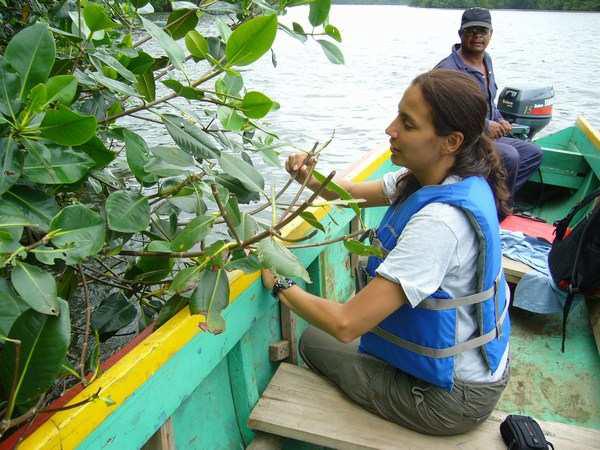Giselle Muschett
This project aims to determine the abundance, habitat use and genetic health of a relatively unknown population of West Indian manatees (Trichechus manatus) in Lake Gatún, in the heart of the Panama Canal Watershed.

The West Indian Manatee (Trichechus manatus) has been little studied in Panama. It is considered an endangered species by the World Conservation Union (IUCN) and the Convention on the International Trade in Endangered Species (CITES), and as such any and all existent populations of manatee are of great importance to the species’ survival. In 1964, nine West Indian manatees (T. manatus) from the Caribbean province of Bocas del Toro and one Amazonian manatee (T. inunguis) from Peru were relocated to the Lake Gatun in the Panama Canal Watershed by the former Panama Canal Commission. They were part of a program to help control aquatic vegetation in the lake, but the program was abandoned some four years later. The manatees were left in the lake, and have since begun to reproduce.

In 1982 the manatee population in the lake was estimated in 25 individuals, but this was a rough estimate, and there is no current data. There are also unconfirmed reports that local communities still hunt the manatee as a source of protein, but there have been no more studies carried out on this species in the country. This manatee population is assumed to be highly inbred and possibly contain hybrids of the two species (T. manatus and T. inguis). The current conservation status of this population and the current threats to its survival remain unknown.
This project will study the abundance, habitat use and conservation status of the manatees in the lake through interviews, direct (aerial/boat) surveys, and genetic analysis. The genetic analysis will help determine the relationship to the manatee population in Bocas del Toro, which popular belief considered the only source of manatees in the lake. However, there are reports of manatees in the Chagres river, prior to its enclosure for the creation of lake Gatun and the Panama Canal. It is quite possible that several of these manatees survived the construction period of the Canal and have intermingled with the introduced manatees to create a viable and stable population. These results will be the first for this unique manatee population. The results come at a crucial moment, given the upcoming Canal expansion.